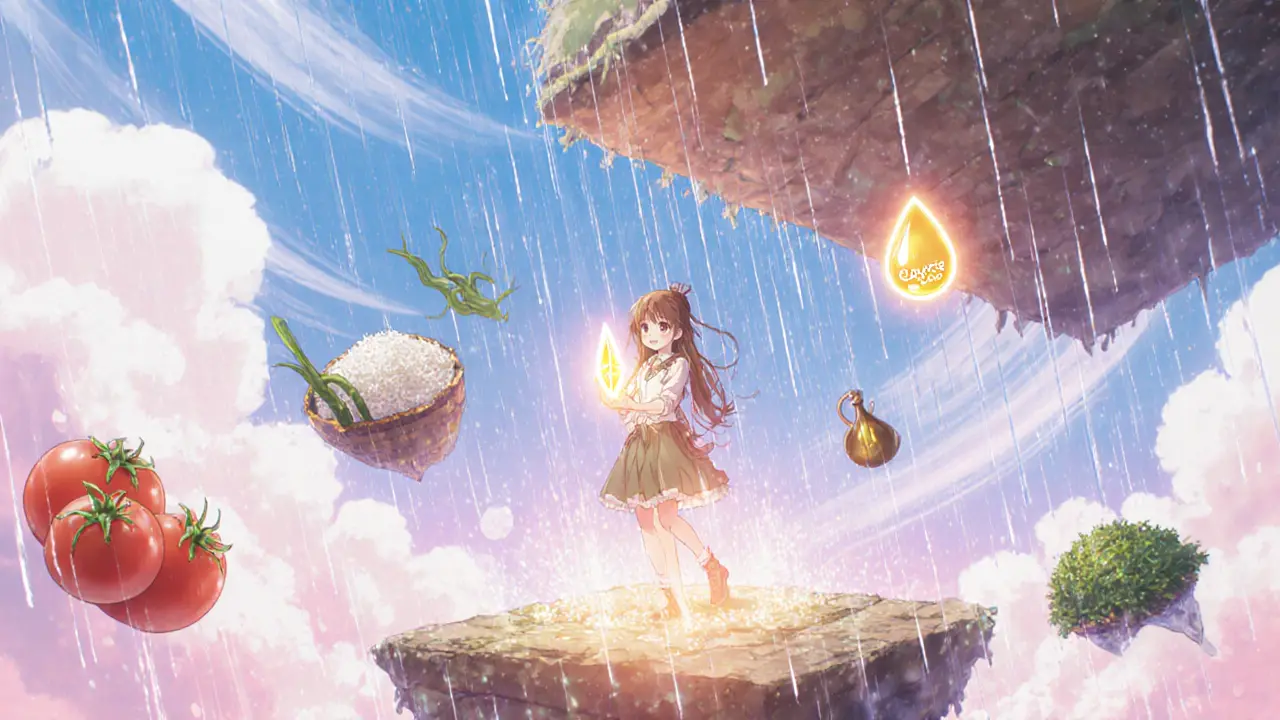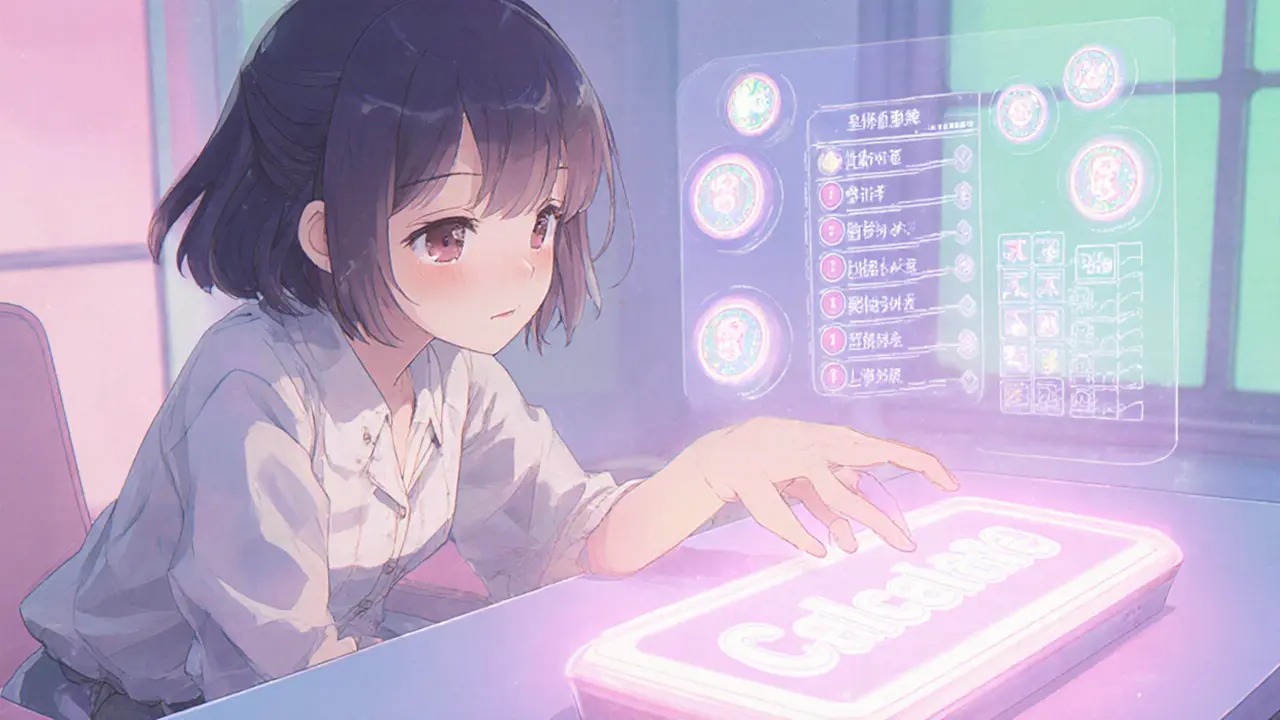OneRare Ingredient NFT Calculator
Estimated Ingredient NFT Earnings
Based on your inputs, here's what you can expect:
Total Estimated Ingredients:
0
Note: Actual results depend on randomization and environmental events.
OneRare Ingredient NFT airdrop rumors have been swirling, but what’s really happening in the Foodverse? Below you’ll find a clear breakdown of how ingredient NFTs are actually distributed, how to get involved, and what the latest updates mean for players.
- OneRare uses a farming system, not a classic airdrop, to hand out ingredient NFTs.
- Stake ORARE tokens in themed pools on Polygon to earn random ingredient NFTs per hour.
- Environmental events can temporarily halt farming for specific ingredients, creating real‑world‑style scarcity.
- The Marketplace lets you buy or sell special ingredients you can’t farm.
- Understanding these mechanics helps you plan a successful minting strategy for high‑value Dish NFTs.
What is OneRare and Why It Matters
OneRare is the world’s first food‑focused metaverse that blends cuisine, NFTs, and play‑to‑earn mechanics on the blockchain. Launched in late 2021, the platform lives on the Polygon network, which keeps gas fees low and transaction speed high-crucial for a game that rewards frequent actions.
The ecosystem is split into four zones: Farm, Farmer’s Market, Kitchen, and Playground. Each zone serves a purpose, but the Farm is where ingredient NFTs first appear.
How Ingredient NFTs Are Distributed
Contrary to typical airdrop campaigns, OneRare doesn’t just drop tokens to random wallets. Instead, it employs a farming model:
- Acquire the native token ORARE (ticker ORARE).
- Connect a Web3 wallet (MetaMask, Trust Wallet, etc.) to the OneRare dashboard.
- Select one of six themed farming pools-each pool contains a randomized list of ingredient NFTs such as onions, tomatoes, lettuce, oil, or salt.
- Stake your ORARE tokens. The system emits ingredient NFTs at a fixed rate (approximately 0.02 NFT per hour per 100 ORARE).
- Collect the NFTs in your wallet. You can’t pick specific ingredients; the pool decides randomly.
This method ensures continuous engagement: the more you stake, the more NFTs you harvest.
Is There an Actual Airdrop?
Official communications from OneRare have never announced a dedicated “Ingredient NFT airdrop” event. What many users label as an “airdrop” is actually a promotional boost-short‑term increases in the emission rate for certain pools or bonus NFTs for early adopters. These boosts are announced on the platform’s Discord and Telegram channels and usually require participants to have already staked a minimum amount of ORARE.
In practice, you can treat these boosts like a temporary airdrop:
- Check community channels for upcoming boost windows.
- Ensure you have enough ORARE staked before the window opens.
- Harvest the extra NFTs once the boost ends.
If you’re looking for a classic airdrop (free NFTs sent to a wallet list), the Foodverse currently offers none. All distribution is tied to staking activity.
Environmental Events and Their Impact
The Foodverse tries to mirror real agricultural challenges. Randomly, the game triggers events like droughts, heavy rains, pest infestations, or even tornadoes. When an event targets a specific crop, the related farming pool stops emitting that ingredient for a set period (usually 12-48 hours). This creates scarcity, which in turn drives up prices on the Farmer’s Market.
Strategic players watch the event feed closely. If a drought hits the “Potato Pool”, the value of potato NFTs spikes, and you can sell them for a profit or hold them for future dish minting (e.g., French fries).
From Ingredients to Dish NFTs
Once you have a collection of ingredient NFTs, head to the Kitchen. Here you combine the required ingredients to mint a Dish NFT. The original ingredient NFTs are burned-they disappear forever, so plan your combos wisely.
Examples:
- French Fries: potato + oil + salt.
- Margherita Pizza: dough + tomato + cheese + basil.
- Sushi Roll: rice + seaweed + fish + cucumber.
Some dishes are linked to celebrity chefs or restaurant partners, granting extra rewards or limited‑edition status.

Where to Buy or Trade Special Ingredients
If a certain ingredient is unavailable due to an environmental pause, you can still obtain it via the Farmer’s Market. The market has three shops:
- Standard Shop - lists all farm‑produced NFTs at market rates.
- Premium Shop - sells exclusive ingredients tied to chef collaborations (e.g., “Truffle Oil” from a Michelin‑star chef).
- Secondary Marketplace - player‑to‑player listings, often at volatile prices.
Buying from the market can be more expensive than farming, but it guarantees you have the exact ingredients needed for high‑value dishes.
Quick Reference: Distribution Methods Comparison
| Method | How to Earn | Control Over Ingredients | Typical Cost | Risk Factors |
|---|---|---|---|---|
| Farming (Staking) | Stake ORARE in themed pools | Randomized; no selection | Low (just the staked ORARE) | Environmental pauses, emission rate changes |
| Marketplace Purchase | Buy directly from Farmer’s Market shops | Full control - pick exact NFT | Medium to high (depends on rarity) | Price volatility, limited supply |
| Promotional Boost (Airdrop‑like) | Earn bonus NFTs during announced boost windows | Random, but higher chance due to bonus rate | Zero extra cost, but requires prior staking | Time‑sensitive, limited‑time only |
Step‑by‑Step Guide to Start Farming Today
- Set up a Polygon‑compatible wallet (MetaMask is the easiest).
- Buy ORARE on a supported exchange (e.g., Binance, KuCoin) and bridge it to Polygon.
- Visit the OneRare dashboard and connect your wallet.
- Choose a farming pool that matches your culinary interests (e.g., “Italian Ingredients”).
- Stake the desired amount of ORARE. Remember, the more you stake, the higher the hourly NFT yield.
- Monitor the “Event Feed” for any environmental disruptions that may affect your pool.
- When you receive ingredient NFTs, decide to either keep farming, sell on the market, or head to the Kitchen to mint a Dish NFT.
Following these steps gets you into the Foodverse loop quickly, even if a formal airdrop never arrives.
Common Pitfalls and How to Avoid Them
- Ignoring environmental alerts: A sudden drought can halt your chosen ingredient. Keep an eye on the in‑game news panel.
- Over‑staking without a plan: Staking huge ORARE amounts without a clear dish goal can tie up capital. Allocate staking based on the dishes you aim to mint.
- Burning valuable NFTs unintentionally: Some ingredient NFTs become rarer after a boost. Double‑check the dish recipe before confirming a burn.
- Missing boost windows: Boost announcements are usually posted 24‑48 hours in advance. Set reminders in your calendar.
Future Outlook for OneRare Ingredient Distribution
OneRare’s roadmap hints at two upcoming features that could change how users acquire ingredients:
- Seasonal Harvest Events: Limited‑time farms that drop exclusive ingredients tied to real‑world holidays (e.g., “Halloween Pumpkin”).
- Dynamic Yield Adjustments: Smart contracts that increase emission rates for under‑populated pools, balancing scarcity.
Both ideas aim to keep the ecosystem fresh and give players new chances to collect rare NFTs without relying on traditional airdrops.
Frequently Asked Questions
Is there a scheduled OneRare ingredient NFT airdrop?
No official airdrop has been announced. Distribution happens through staking‑based farming and occasional promotional boost windows.
How much ORARE do I need to start farming?
The minimum stake is 100 ORARE per pool, but higher stakes increase hourly NFT yield. Many users start with 500-1,000 ORARE to see a steady flow.
Can I sell ingredient NFTs on external marketplaces?
Yes. Ingredient NFTs are ERC‑721 tokens on Polygon, so you can list them on OpenSea, LooksRare, or any Polygon‑compatible NFT marketplace.
What happens to ingredient NFTs after I mint a dish?
The ingredient NFTs are burned automatically, meaning they are removed from circulation and cannot be reclaimed.
Do environmental events affect NFT prices?
Absolutely. When a crop is hit by a simulated drought, its ingredient NFT becomes scarce, driving up market prices on the Farmer’s Market.


Christine Wray
September 27, 2025 AT 15:28OneRare’s farming system is a clever way to keep players engaged without relying on a classic airdrop. By staking ORARE you get a steady drip of random ingredient NFTs, which feels more like a game than a giveaway. The environmental events add a nice strategic layer, encouraging us to watch the feed. It’s a balanced approach that rewards patience and planning.
roshan nair
October 9, 2025 AT 05:14Indeed, the staking‑based model replaces the typical airdrop hype with a sustainable yield mechanism. Teh minimum 100 ORARE stake ensures only committed users participate, while larger stakes proportionally increase hourly drops. The randomisation introduces an element of surprise, which many find exciting. Additionally, the boost windows act as temporary “air‑drops”, giving extra NFTs to early adopters. Remember to monitor Discord for these events, as they often require a pre‑stake.
Jay K
October 20, 2025 AT 19:01The environmental events, such as droughts or pest infestations, temporarily suspend specific ingredient emissions. This mimics real‑world agricultural challenges and creates scarcity that can be capitalised upon. Keeping an eye on the in‑game news panel is essential for timely adjustments.
Kimberly M
November 1, 2025 AT 08:48Exactly, those event alerts can be a game‑changer! 🌧️🌞 By watching the feed you can anticipate price spikes and sell at a premium. Plus, the emoji‑filled marketplace makes trading feel lively. Stay vigilant and happy farming! 😊
Navneet kaur
November 12, 2025 AT 22:34This whole “boost window” thing feels like a sneaky way to manipulate token holders. It’s basically saying “pay more, get more” under the guise of a charitable airdrop. Simple people deserve transparency, not hidden incentives. The platform should be honest about how many NFTs are actually distributed.
Marketta Hawkins
November 24, 2025 AT 12:21Wow, looks like someone missed the memo about community‑driven distribution. The “boost” is just a marketing ploy, nothing more. 😏 Anyway, if you want more NFTs, just stake more – that’s the real secret. It’s not a giveaway, it’s a reward for buying in.